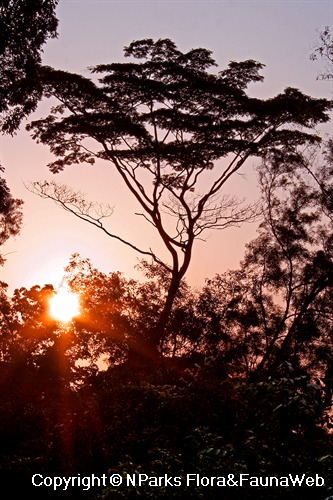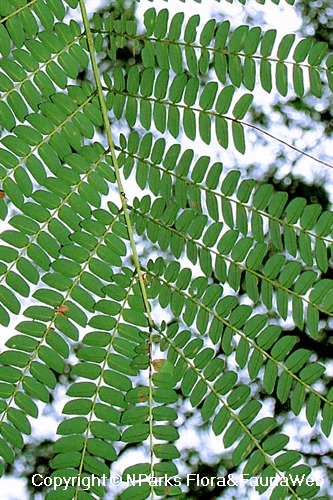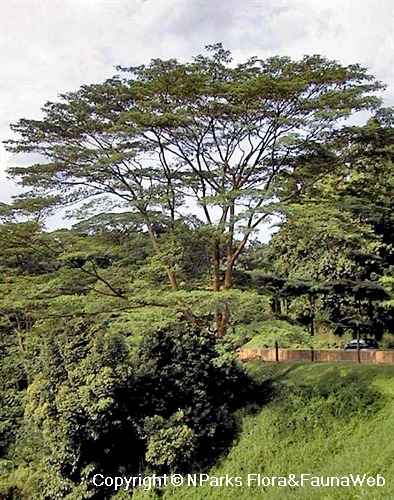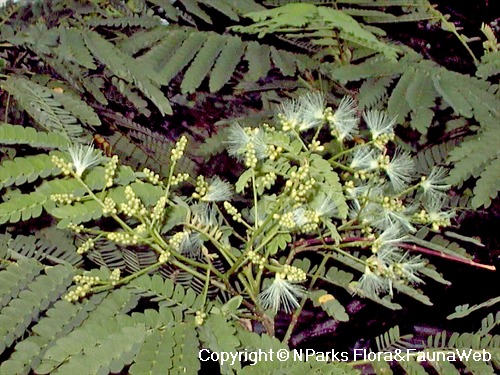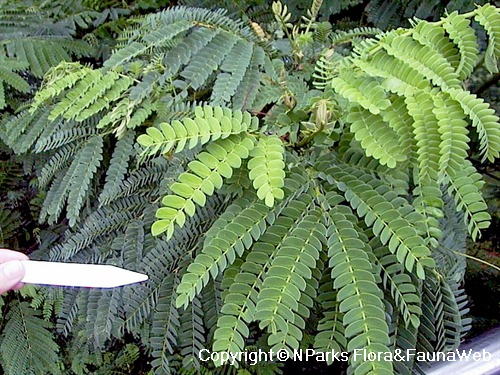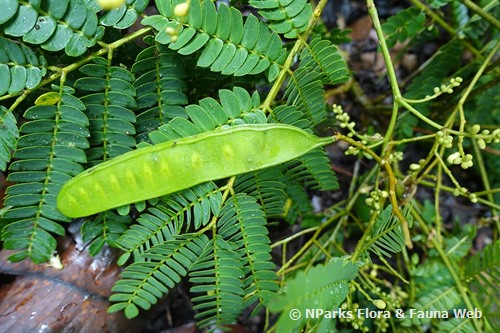
Back
Falcataria falcata (L.) Greuter & R.Rankin
| Family Name: | Fabaceae (Leguminosae) |
| Synonyms: | Falcataria moluccana, Albizia fulva, Albizia moluccana, Albizia eymae, Albizia falcata, Adenanthera falcataria, Albizia falcataria, Paraserianthes falcataria |
| Common Name: | Albizia, Kayu Machis, Batai, Peacocksplume, 南洋楹, 南洋合欢 |
Name
Classifications and Characteristics
| Plant Division | Angiosperms (Flowering Seed Plants) (Dicotyledon) |
|---|---|
| Plant Growth Form | Tree (Big (>30m)) |
| Lifespan (in Singapore) | Perennial |
| Mode of Nutrition | Autotrophic |
| Plant Shape | Umbrella |
| Maximum Height | 40 m |
| Tree or Palm – Trunk Diameter | 1 m |
Biogeography
| Native Distribution | Indonesia (Irian Jaya, Moluccas), Papua New Guinea, Southwestern Pacific (Solomon Islands) |
|---|---|
| Native Habitat | Terrestrial (Secondary Rainforest) |
| Preferred Climate Zone | Tropical |
| Local Conservation Status | Non-native (Spontaneous (Naturalised)) |
Description and Ethnobotany
| Ethnobotanical Uses | Others: Timber: Relatively soft wood, used in light construction, and to make plywood, verneer, low-density particleboard, pallets, packing boxes, chopsticks and matches. Easy to cut, and used for wooden shoes, toys and musical instruments. Light-coloured pulp used to make paper with very little bleaching needed. Also widely utilized as fuelwood and charcoal. Agriculture: Used as shade tree in coffee and tea plantations, as well as for young timber trees. Leaves used as fodder to feed livetsock like chickens and goats. Products: Bark used for tanning and dyestuff. |
|---|
Landscaping Features
| Landscape Uses | Shade Providing Tree / Palm |
|---|---|
| Thematic Landscaping | Naturalistic Garden |
| Usage Hazard - Cons | Weak Branches |
| Usage Hazard - Cons Remarks | Shallow-rooted, prone to being uprooted. Branches & trunk become dangerously brittle and susceptible to breakage after plant dies. |
Fauna, Pollination and Dispersal
| Fauna Pollination Dispersal Associated Fauna | Butterfly Host Plant |
|---|---|
| Seed or Spore Dispersal | Abiotic (Explosive Dehiscence) |
Plant Care and Propagation
| Light Preference | Full Sun |
|---|---|
| Water Preference | Moderate Water |
| Plant Growth Rate | Fast to Moderate |
Foliar
| Foliage Retention | Evergreen |
|---|---|
| Mature Foliage Colour(s) | Green |
| Mature Foliage Texture(s) | Smooth, Thin |
| Foliar Type | Compound (Even-Pinnate) |
| Foliar Shape(s) | Non-Palm Foliage (Asymmetrical) |
| Foliar Venation | Pinnate / Net |
| Foliar Margin | Entire |
| Leaf Area Index (LAI) for Green Plot Ratio | 2.5 (Tree - Open Canopy) |
Non - Foliar and Storage
| Trunk Type (Non Palm) | Woody |
|---|---|
| Stem Type & Modification | Woody |
| Root Type | Underground (Tap Root, Fibrous Root) |
Floral (Angiosperm)
| Flower & Plant Sexuality | Bisexual Flowers |
| Flower Colour(s) | White |
|---|---|
| Flowering Habit | Polycarpic |
Fruit, Seed and Spore
| Mature Fruit Colour(s) | Black |
|---|---|
| Fruit Classification | Simple Fruit |
| Fruit Type | Dehiscent Dry Fruit , Legume / Pod |
Image Repository
Others
| Master ID | 31226 |
|---|---|
| Species ID | 5620 |
| Flora Disclaimer | The information in this website has been compiled from reliable sources, such as reference works on medicinal plants. It is not a substitute for medical advice or treatment and NParks does not purport to provide any medical advice. Readers should always consult his/her physician before using or consuming a plant for medicinal purposes. |

